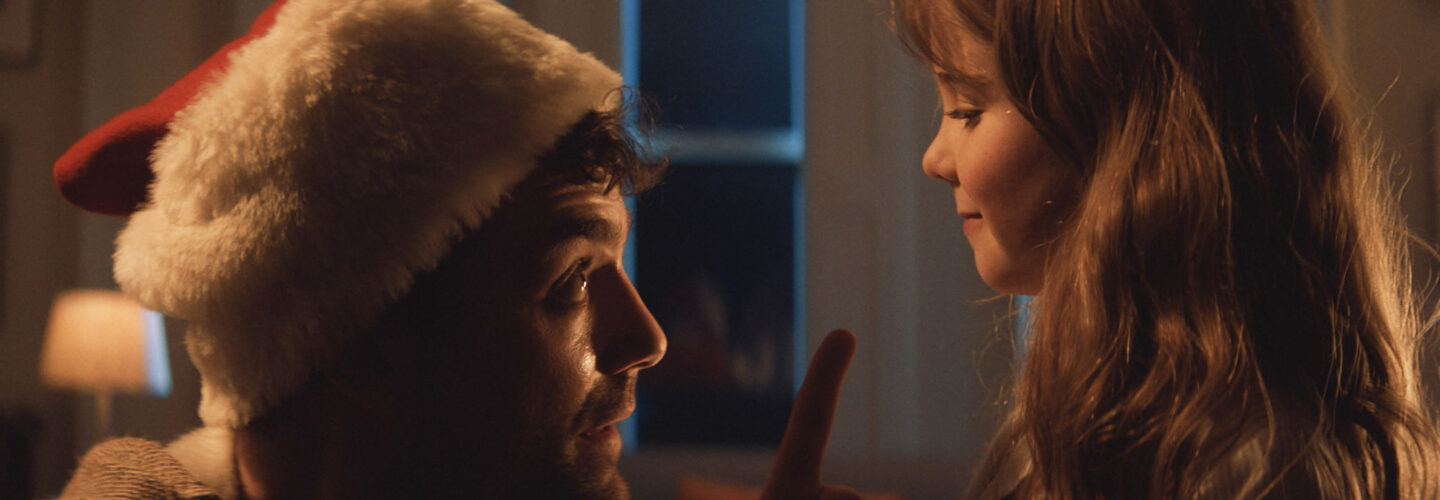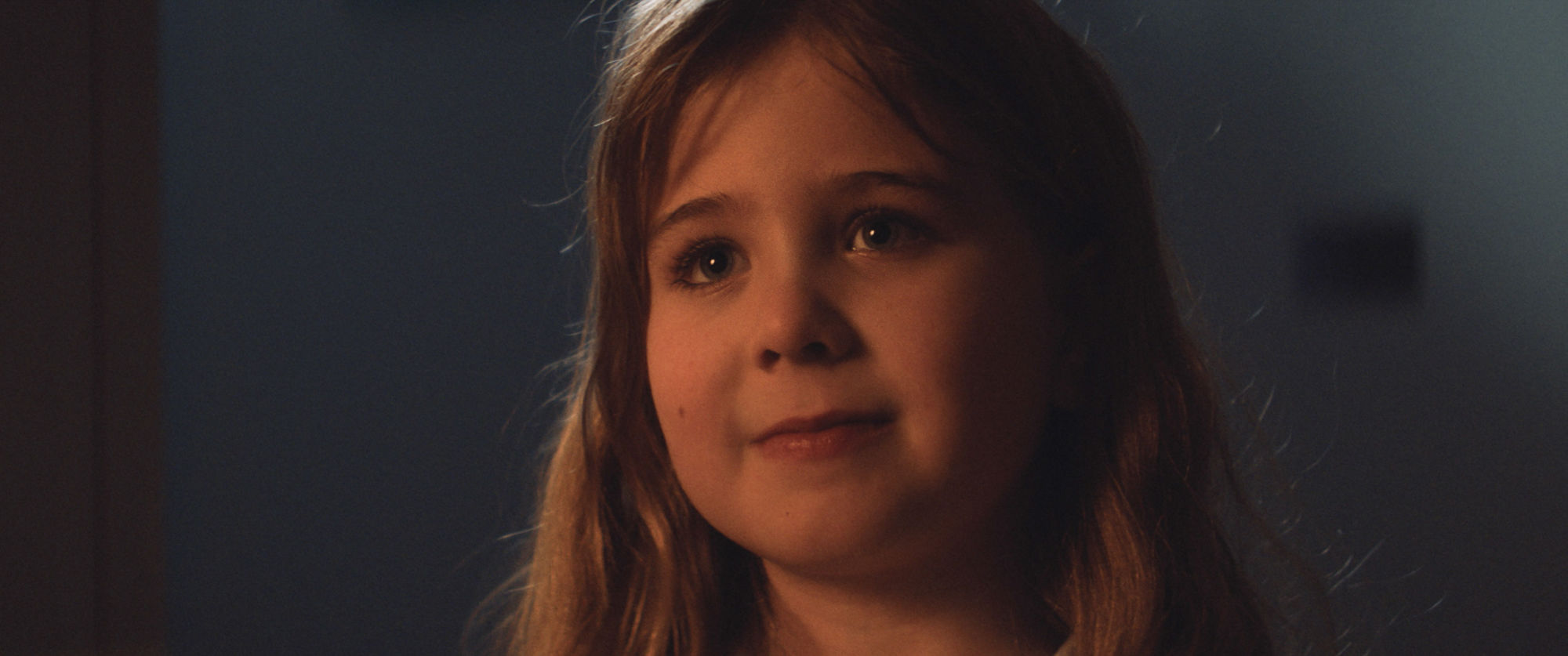
A much need antidote to the typical saccharine stuffed fair of the Yuletide season, Oliver Kember’s Last Christmas sets a Santa dressed burglar at odds with a cynical 7-year-old girl as he attempts to convince her that he’s the real deal after being caught in the act of stealing her presents. You can watch Last Christmas, below after which Oliver shares how he maximised time on set whilst adhering to child performer laws and why Christmas was the perfect backdrop for an uncomfortable comedy short you can enjoy each and every year.
Last Christmas was written by myself and my writing partner Freddie Hall. We were playing around with ideas for a new short and wanted something that could be set in a single location and shot in a day. Within those constrictions, we found great joy in the idea of a plan as genius and yet foolish as someone robbing houses dressed as Santa on the one evening you might get away with it. I also love the evergreen nature of Christmas and I really wanted to make a film that I could share every year, from now until forever! This could be my Die Hard if you will. (The best Christmas movie, for my money…)
We shot the film on the Arri Alexa Mini with these fantastic anamorphic lenses which are the only set of their kind in the world. They are called Toyo Eiki and for the nerdy of you out there they come in 32mm, 50mm, 100mm and 203mm lengths. Absolutely bizarre range but wonderful looking. Most of the film was shot with the 50mm and 100mm, with the 32mm being used for wides. Very handy to have for an interior shoot. We didn’t use the 203mm!
I really wanted to make a film that I could share every year, from now until forever!
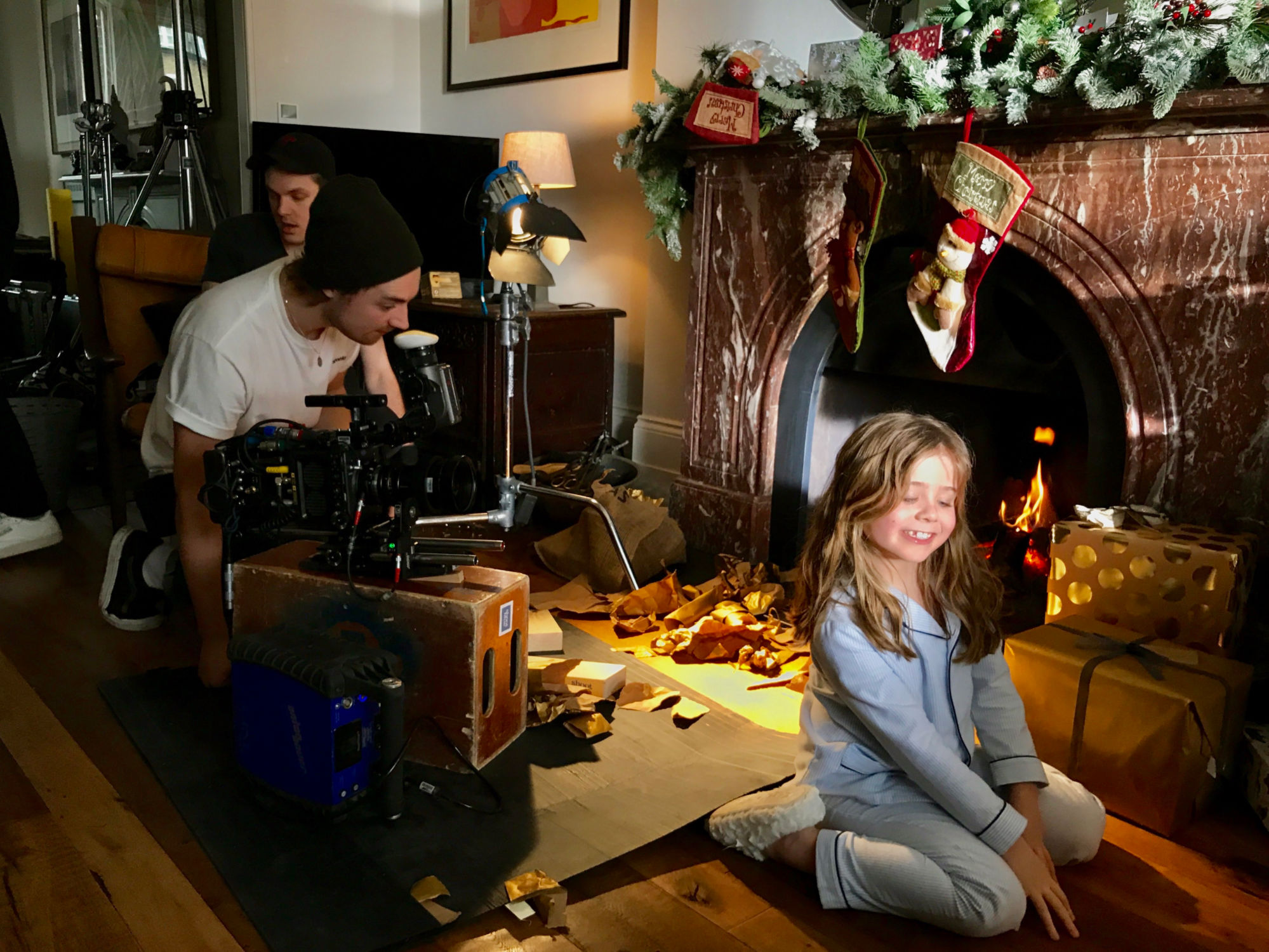
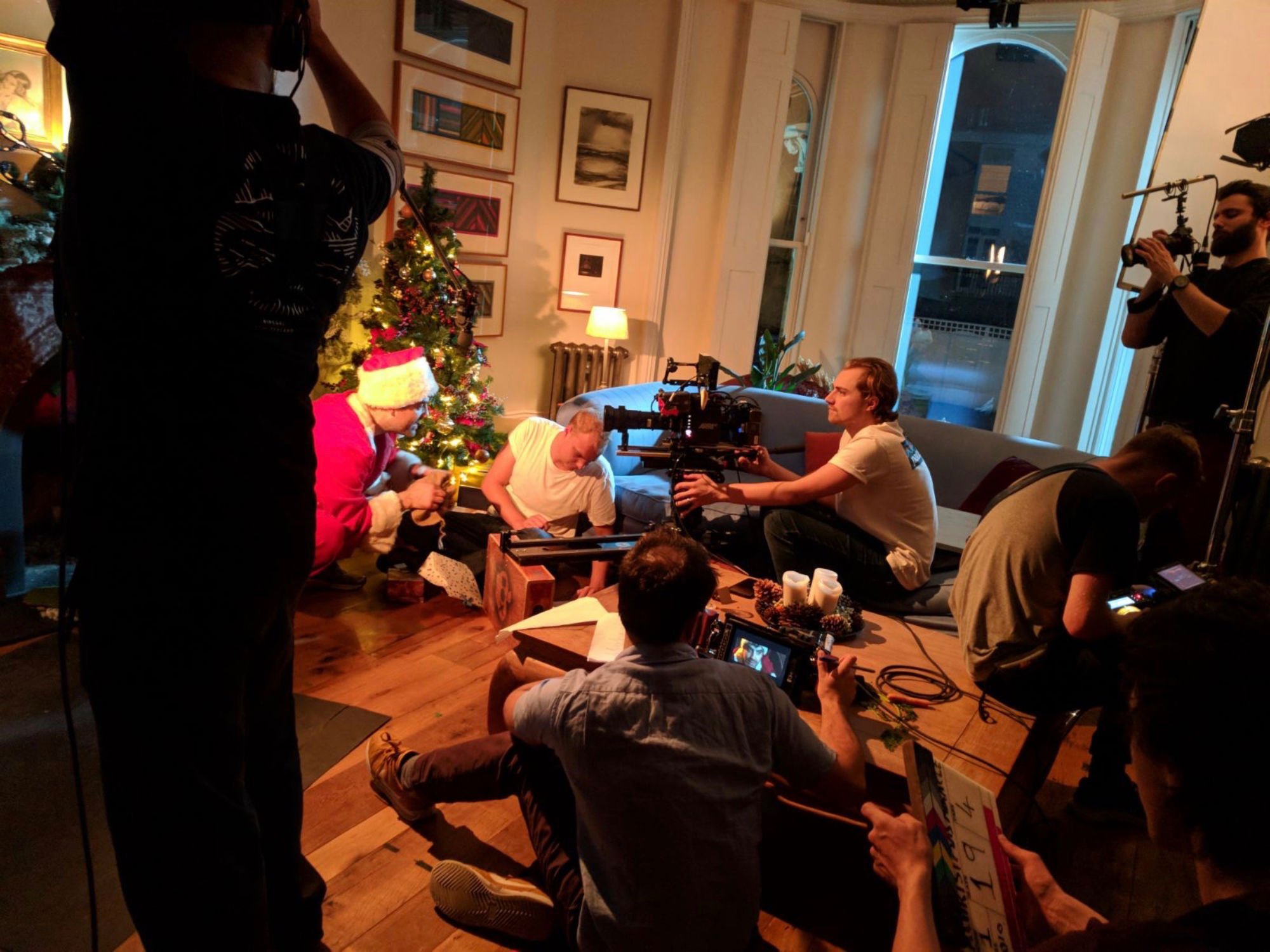
My cinematographer for this film, Aaron Rogers, is a real tungsten fanatic and so most of the film was lit with Arri 650w fresnels on dimmers. He was bouncing them into apple boxes and all sorts to get that warm glow. You can afford to have loads of fresnels because they’re so cheap and just flick them off and on as you move throughout the set, which is what we did, and it was a real time saver. A big reference for me is the work of Robert Richardson. Those warm pools of hot light that he creates, very noticeably throughout The Hateful Eight for example, were a good place for us to start visually.
We shot this in one day, and of course, we were working with a 7-year-old child so time was quite tight. There are real restrictions on how long you can have them on set for and then even tighter restrictions on how long you can have them in front of camera for. You get 8 hours on set and 3 hours performance time.
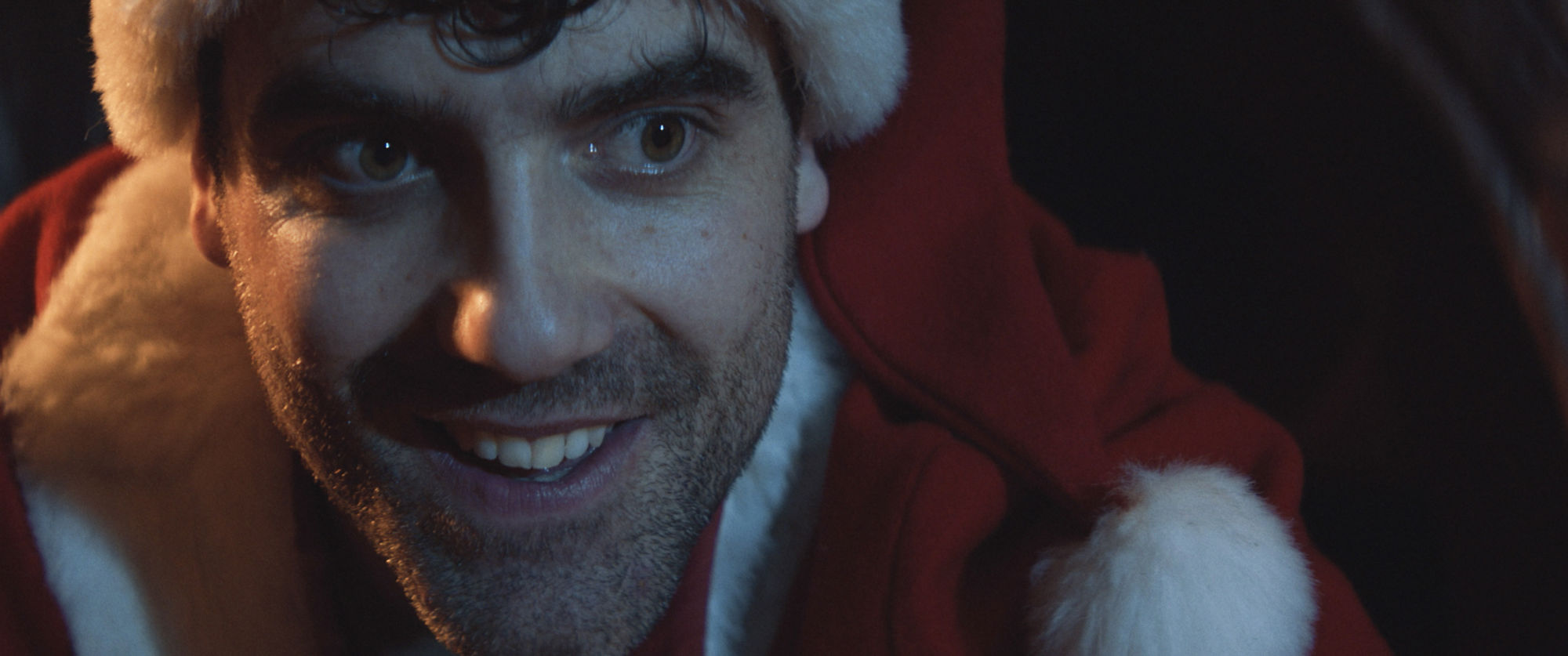
We shot Poppy’s stuff first and then that was that, so believe it or not Daniel Ings, who plays Steve/Santa is mostly acting to Freddie, the co-writer and also 1st AD on the shoot who is reading the lines to him off camera in place of Poppy. I think that’s an amazing testament to his acting that he gives such a funny and nuanced performance and he’s mostly talking to the side of another man’s head. I’m sure Freddie’s reading of the lines was great, but still…
The film was graded at my home on my iMac with Aaron my DP. We worked hard to pull out that separation between character and background, keeping skin tones warm and the environment blueish so there’s a colour contrast and everything pops. It amazes me that DaVinci Resolve once used to be a super expensive, exclusive piece of software and is now free. I have no idea how they do it but I love them for it.

The whole landscape of filmmaking has shifted into such exciting territory where you can do so much if you simply invest the time into learning the tools.
I composed the score myself, also at home on my computer, and it’s my first public piece of music ever, so I’ve been watching out for comments about the awful music – going okay so far! I mention these things because I’ve watched filmmaking explode from when the 5D Mark II came out in 2008 and blessed us with shallow depth of field video in a small form factor. Here we are 10 years later and the whole landscape of filmmaking has shifted into such exciting territory where you can do so much if you simply invest the time into learning the tools. There’s, of course, nothing like working with a specialist if you can get them but it’s great to have the option to give it a go yourself. For me, that’s the fun of making films; trying out new life experiences that I haven’t tried before. Two years ago I had barely touched a piano, and now? Orchestras in my pocket. It’s an exciting time to be a filmmaker.

